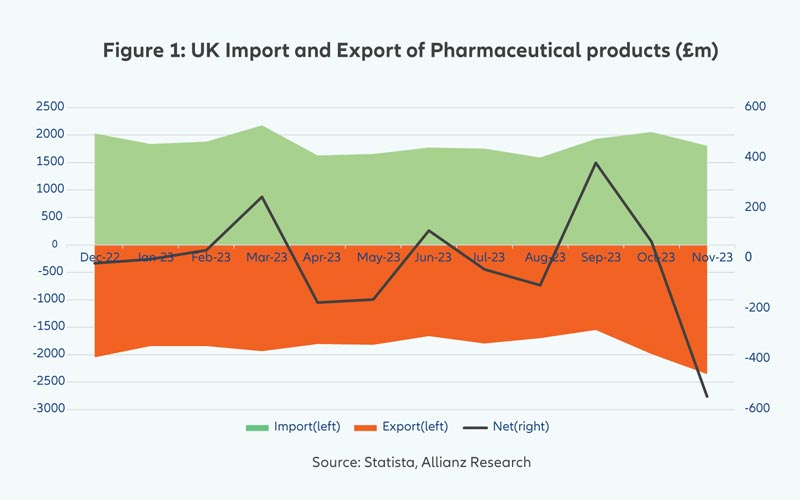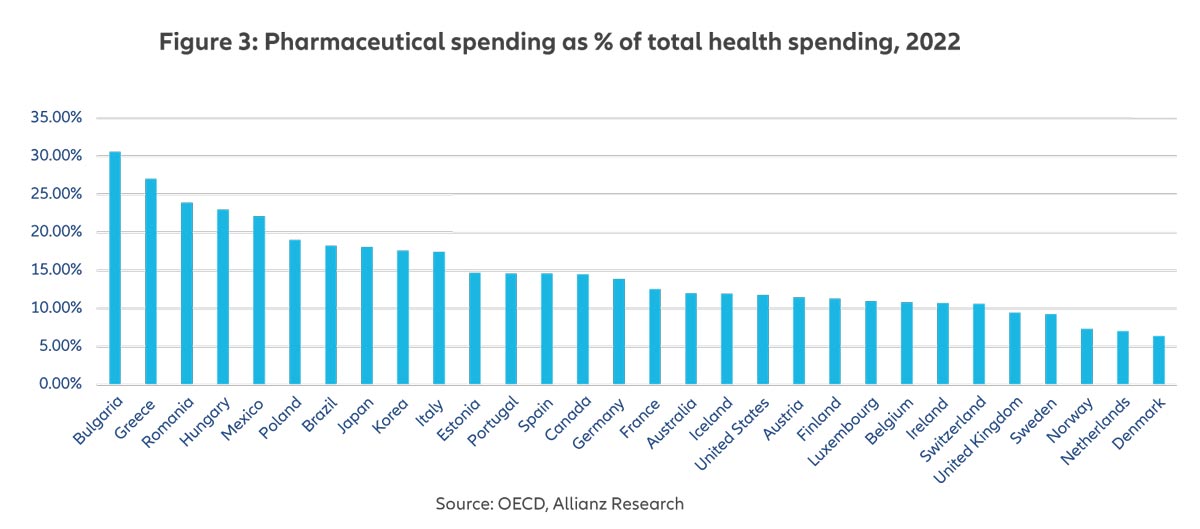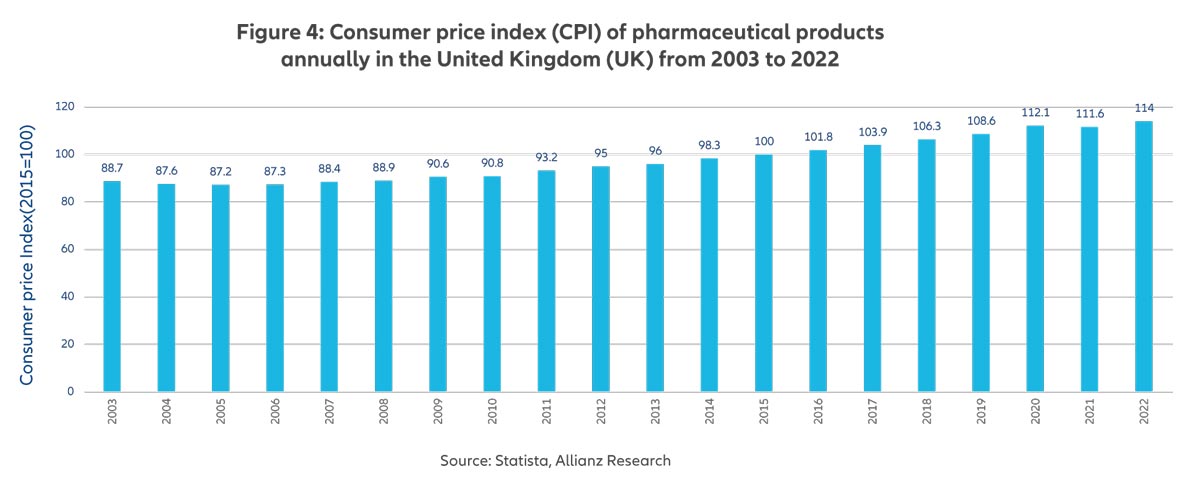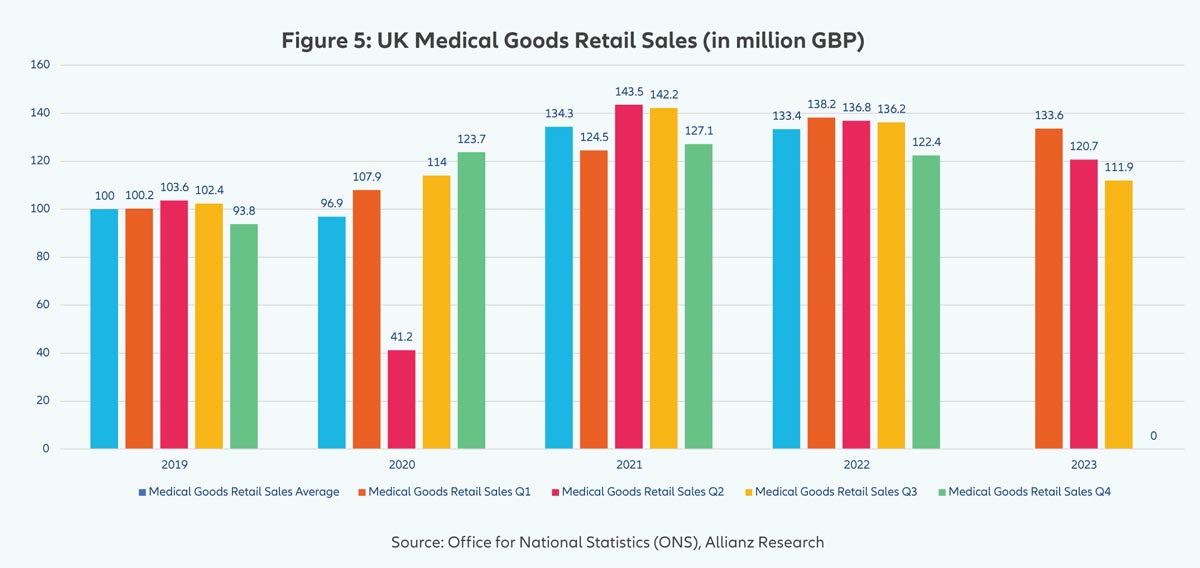"The five-year pricing agreement has provided a steady revenue stream for pharmaceutical manufacturers, including both branded and generic products. As branded products come off licence, generic manufacturers will expand, prompting branded manufacturers to innovate new blockbuster drugs. Liquidity for investment is ample in both sectors, with low risk of insolvency. Wholesale distributors face escalating pressure due to more brands coming off licence, leading to cheaper generic alternatives and reduced revenue. Sustained margin pressure will continue due to high stock levels among wholesalers, increased interest and fuel costs, and the predominant use of invoice finance for funding."
Kieron Franks
Assistant Head of Credit Underwriting, Allianz Trade








